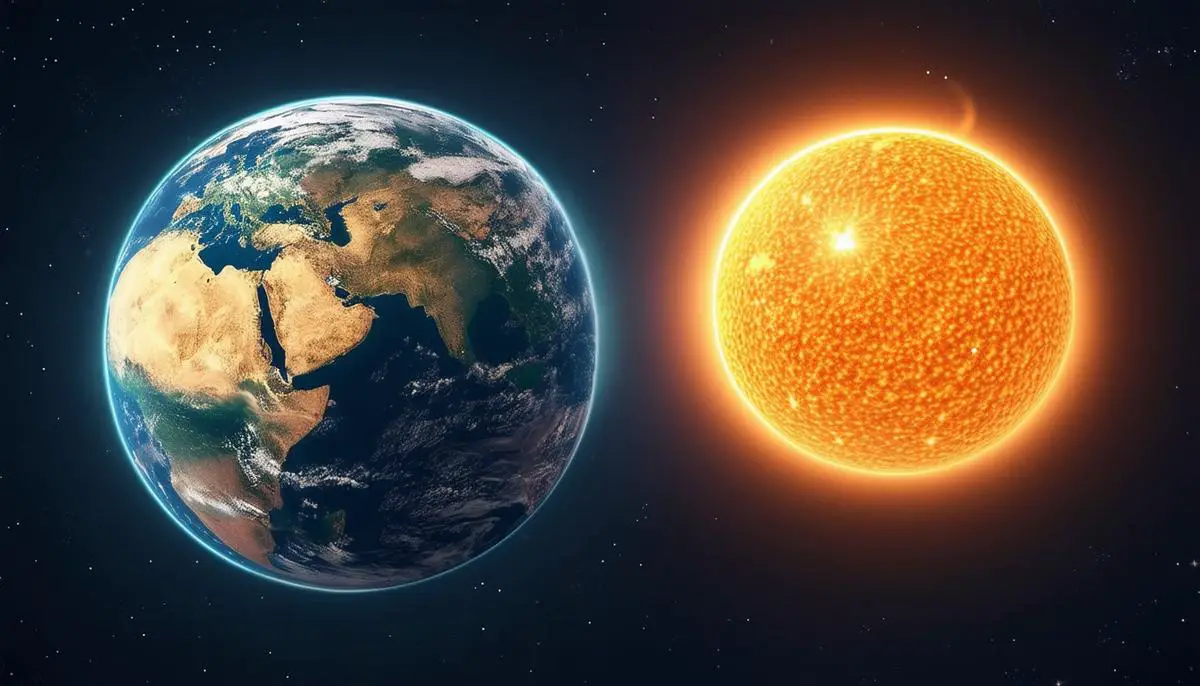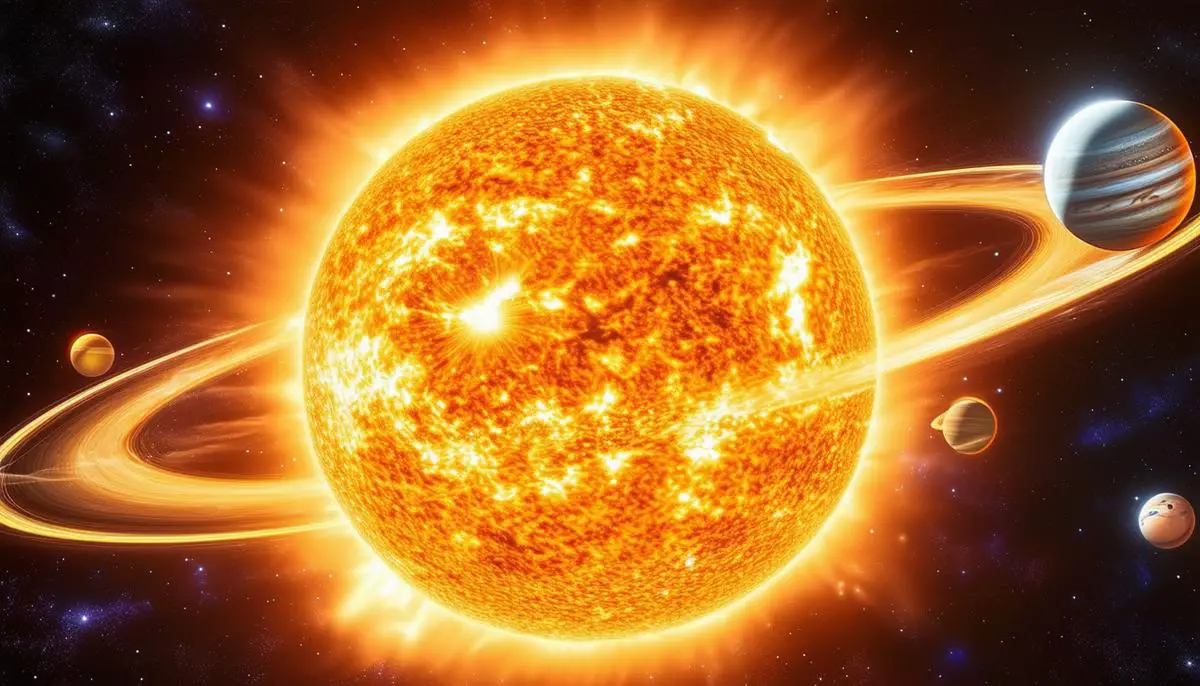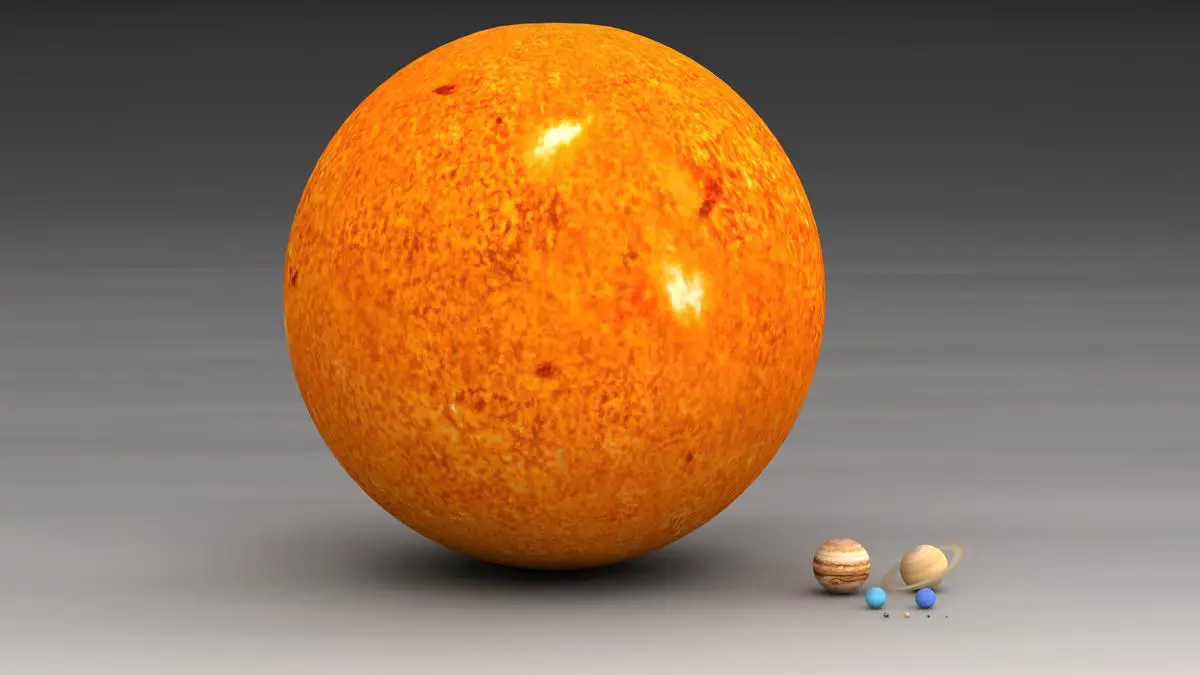Physical Dimensions of Earth and the Sun
The Earth, while vast from our perspective, is remarkably small compared to the Sun. The Earth has a radius of approximately 6,371 kilometers, which translates to a diameter of about 12,742 kilometers. In contrast, the Sun's equatorial diameter is around 1,391,000 kilometers. This means you could fit about 109 Earths side by side across the face of the Sun.
In terms of volume, the Earth holds approximately (1.08 times 10^{12} ) cubic kilometers, while the Sun boasts about (1.41 times 10^{18} ) cubic kilometers. This illustrates that about 1.3 million Earths could fit inside the Sun if it were hollow.
These comparisons highlight the Earth's relatively small size in the context of our solar system. Despite providing a home to all known life forms, the Earth is a tiny oasis amidst the vast expanse of space.

Mass and Volume Comparisons of Earth and the Sun
The Sun's mass is about 1.989 x 10^30 kilograms, while Earth's mass measures around 5.97 x 10^24 kilograms. This reveals that the Sun is approximately 333,000 times as massive as Earth, highlighting its gravitational dominance in the solar system.1
The Sun's gravitational pull keeps Earth and the other planets in their respective orbits, maintaining the solar system's structure and predictability. This gravitational centralization affects everything from orbit periods to tidal forces on Earth.
The solar system's formation was significantly influenced by the Sun's gravitational supremacy. According to the solar nebula theory, much of the material in the giant cloud of gas and dust that formed the solar system was pulled toward the center, forming the Sun. The remaining materials orbited around this nascent star, gradually coalescing into the various planets, moons, and other celestial bodies we recognize today.2
The disparity in volume between Earth and the Sun is equally striking:
- Roughly 1.3 million Earths can reside within the Sun if it were hollow.
- This difference in size reflects the Sun's influence on light, energy, and climate conditions across the solar system.

Contemplating the differences in size and mass between Earth and the Sun reminds us of our modest place within the vast cosmos. This perspective fosters a deeper appreciation for the delicate cosmic balance that allows life to flourish under such monumental forces.
- Williams DR. Sun Fact Sheet. NASA. 2013.
- Woolfson M. The origin and evolution of the solar system. Astronomy & Geophysics. 2000;41(1):1.12-1.19.
![]()
